Technological Projects
LIBROS System is carrying out three distinct technological projects that involve the participation of education and research institutions.
The projects are:
- Technological Project for the Terrestrial Dynamic Mapping
- Technological Project for Biofuels Production from Seaweed
- Project for Obtaining Carbon Credtis from Seaweed
Besides the mentioned projects, others are in phase of evaluations by the technical team of LIBROS System and in the right time will be posted here
A LIBROS Systemís technical team conducts the Technological Project for Terrestrial Dynamic Mapping internally and the Technological Project for Biofuel Production from Seaweed is being made by the associated company Bioplanct Renewable Fuels and has a mixed team. The Project for Obtaining Carbon Credits from Seaweed is result of The Project for Biofuels Production from Seaweed.
Technological Project for the Terrestrial Dynamic Mapping
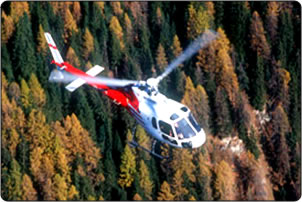 The terrestrial dynamic mapping comes as a result of the static mapping. The static images obtained by remote sensing in latest years received and keep receiving large investments, especially as regards the development of equipments to imaging Earthís surface, whether by aerial photographs or by satellite images. This evolution on images captation quality is assisting professionals from various fields, such as those who work in urban, rural and forest planning, risk areas identification, deforestation monitoring, among others. This technological innovation created a new consumer market and thousands of new professionals, and itís essential in any action regarding terrestrial management and zoning.
The terrestrial dynamic mapping comes as a result of the static mapping. The static images obtained by remote sensing in latest years received and keep receiving large investments, especially as regards the development of equipments to imaging Earthís surface, whether by aerial photographs or by satellite images. This evolution on images captation quality is assisting professionals from various fields, such as those who work in urban, rural and forest planning, risk areas identification, deforestation monitoring, among others. This technological innovation created a new consumer market and thousands of new professionals, and itís essential in any action regarding terrestrial management and zoning.
The terristrial dynamic mapping, in the same direction, has been constituted as an excellent tool for analyzing the physical and environmental characteristics of a region, especially those with occupation characteristics in the corridor form, as riparian forests, rivers, pipelines, borders, etc.
The technology has a great use potential, mainly because it allows to register phenomena that cannot be view in the static images and itís seeming very promising to the future. The project already has the instutional support of organizations like SANASA - Campinas, Hydrological Monitoring Technological Chamber - CT-MH, Comitees of Piracicaba, Capivari and JundiaŪ Riversí basins and research laboratories as LAPLA - Environmental Planning Laboratory/FEC/UNICAMP and LABGeo - Geoprocessing Laboratory/FEAGRI/UNICAMP.
Terrestrial Dynamic Mapping Potentialities are:
- Environmental Videography
- Significant points identification, like areas that need environmental recovery, pollution points, physical/environmental vulnerability points and weakness
- Metrical and visual estimate of the deforestation degree and impacts caused to the environment
- Ease in the emergency actions elaboration for environmental recovery and located investments
- Significant reduction of the field visits
- Data integration with different societyís sectors through the media-friendly display production
- Emergency actions monitoring, control and supervision
- Aid to the development of environmental education programs
- Aid to processes of estimated biomass calculating and proposes for carbon credit generating and supervision
- Proposal for new research lines creation with the education and research institutions and knowledge insertion in vocational coursesí disciplines
- Entertainment, sports and advertising market
- Frontiers, ecological corridors, pipelines, oil pipelines, water bodies and prompt actions monitoring and surveillance

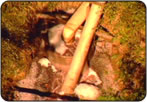
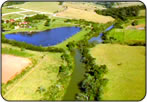
Technological Project for Biofuels Production from Seaweed
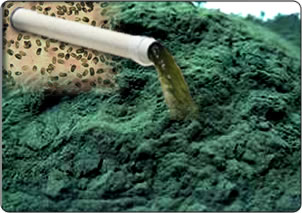 The fossil fuels intense use has been caused changes in planetís environmental balance, which in association to the deforestation processes has been caused the increase of greenhouse effect. People, even among those who have little scientific knowledge about the subject, already feel these effects.
The fossil fuels intense use has been caused changes in planetís environmental balance, which in association to the deforestation processes has been caused the increase of greenhouse effect. People, even among those who have little scientific knowledge about the subject, already feel these effects.
The biofuels production from seaweed is a success alternative both in ethanol production and in biodiesel production.
The culture developing process doesnít require use of fertile soils, doesnít use food crops, contributes to carbon capture, reduces fossil fuels use, opens a range of options for biomass use and production costs in the long term are smaller than the costs of other biofuels productionís renewable sources. Moreover, the product is rising in a market where people are increasingly concerned about the planet where they live.
The project carried out by LIBROS System in association to BIOPLANCT Renewable Fuels, proposes biomass from seaweed processing, mainly the micro algae, for ethanol and biodiesel production. Projectís first phase focus on ethanol production and in the second phase a derivative for biodiesel production, because the algae, depending on the species, have large concentration of oil. The choice of ethanol or biodiesel, or both of them, just depends on investments, productive species and preparing for the consumer market.
The production of ethanol from algae is bigger than sugar cane production. The productive yield, for hectare, is from three to six times higher than sugar caneís productive yield. This variation is related to the used species of algae.
The most favorable places to the production are those near the equator line. The others regions arenít discarded, but their production can be a little smaller. These places identification, as well as the most favorable species for the production, depends on investments on local research, mainly to raise parameters for the production system in tanks planning and ethanol plant manufacture deployment.

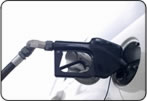

Copyright © 2008 LIBROS. All Rights Reserved

 Português
Português English
English